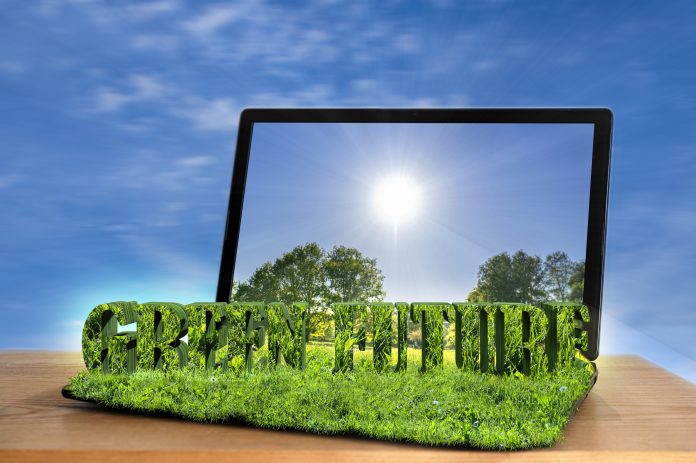Nadeem Malik, head of UK & Ireland at Software AG, looks at how organisations can build back better and ensure their technology and processes are fit for a greener future
Just as transformation became a resounding theme for business last year, 2021 should be defined by sustainability. Over the past year, we’ve seen the UK break its previous record coal-free power run; the US re-join the Paris Climate Agreement; and the number of signatories committing to reduce carbon emissions as part of The Climate Pledge reach 53. Such developments point towards a world coming together to bring sustainable efforts to the top of the agenda, but all is not how it seems.
A recent report has revealed that, while business leaders recognise climate change is no longer a distant threat, almost two-thirds (65%) will cut back on sustainability initiatives as a result of the pandemic. But since the next ten years have been described as the “decisive decade” for tackling climate change, it’s crunch time for businesses when it comes to sustainability.
For organisations to build back better, now is the time to take a critical look at how fit their technology and processes are for the future. It’s the changes made – or not made – now that will determine success for years to come, in both environmental and business efforts.
The best of both worlds
The actions and behaviours of a company are driven by the demands of their customers. Environmental sustainability is becoming a topic that is almost as influential as price and convenience. Recent research suggests a large majority of consumers are classified as either value-driven (41%) or purpose-driven (40%). The former are the traditional profile where brands are chosen based on price and convenience. The latter, however, look for more: how well brands align with personal values, for instance, and may pay more for brands who get it right. As climate change hangs in the spotlight and many more consumers are driven by sustainability, businesses need to reflect that sentiment by delivering a greener future themselves. But it is a best of both worlds scenario: it serves the greater good and moves brands closer to more environmentally-conscious customers, who will surely reject companies that fail to act.
BrewDog champions sustainability through its BrewDog Tomorrow initiative, which has led the craft brewer to recently become the first carbon negative beer business – all while remaining competitive from a commercial standpoint. Among the many achievements of the programme was the brewer switching to local production, not just to shorten the distance to customers, but also to reduce emissions from unnecessary transport. The point here is that getting serious about climate change cannot come at the expense of efficiency gains or the customer experience – those that sacrifice one for the other will likely struggle from a business perspective.
The question remains, then: how can companies strike a balance and do both? How can they do their part to become more sustainable, while becoming more efficient and delivering great customer experiences? The answer so often lies in having the right approach to technology.
Transformation below the surface
The past year saw digital transformation shocked into action, with 97% of businesses undergoing some form of digital change. Many of these transformations constituted “cosmetic” changes to the front-end to address bumps along the customer journey – quality of life improvements or changes in the name of the experience. Companies have too frequently hedged their bets on these surface-level changes, either because they misinterpret the nature of digital or lack the expertise to build on solid foundations. To make sure these changes have more than a short term impact, it’s important for organisations to recognise the fundamental changes required to support these new initiatives.
While a shiny new app or intuitive online interface work well to deal with short-term stumbling blocks, they do little to prepare businesses for longer-term problems. This is as true for customers services as it is for wider sustainability initiatives. A recent study from PwC estimates the minority of companies whose transformation projects succeed invest around a third more in “the plumbing” than others. That is to say the changes below the surface – the processes, the operating models and the core technologies. If digital transformation is not built on a sturdy infrastructure, then it is doomed to fail.
Migrating to the cloud and employing hybrid integration are two key building blocks. They offer scalability and are a more practical solution than moving a company’s entire IT estate from data centres or on-premises sites. What’s more, having a means of tracking performance, not just from a front-end customer perspective, but also from an impact-on-business-process perspective, is essential. A move in the right direction will ultimately rest on the ability of organisations to make changes that future proof their business and position them to face upcoming challenges head on.
Coming to terms with age-old challenges
The pandemic has been the biggest crisis most of us have faced in our lifetimes and is first and foremost a human tragedy. But the climate emergency could have much longer-term impacts, especially from an economic perspective, one recent study has suggested that it could be twice as damaging for G7 economies compared to Covid-19. Businesses need to be ready to confront new crises.
The need to modernise IT estates is not a new challenge and inaction simply isn’t viable when it comes to fighting climate change – in the same way it hasn’t been viable in fighting the pandemic. The problem for most businesses, however, is that disregarding their countless other priorities is equally as unviable. Businesses must therefore work on finding a way to approach the problem while continuing to improve efficiencies, drive growth and remain competitive. To this end, building the technological foundations will be a crucial starting point in any effort to deliver a greener future.












What new strides are being made the fields of infrastructure support and the construction industry?